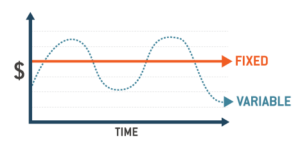Structure of energy rate and feed in duty explanation
In standard directed imposing business model business sectors like the United States, there are staggered administration structures that set power rates. The rates are resolved through an administrative interaction that is administered by a Public Service Commission. What’s more, the Power to Choose manages the discount power market alongside the highway transmission of power. Public Service Commissions PSC, which are otherwise called Public utility commission PUC, manage utility rates inside each state.

The incorporation of sustainable power appropriated age DG and progressed metering framework AMI or shrewd meter in the advanced power matrix has presented numerous elective rate structures. There are a few strategies that advanced utilities structure private rates:
- Basic or fixed – the rate at which clients pay a level rate for every kWh
- Layered or step–rate changes with the measure of utilization some go up to support energy protection, others go down to empower use and power supplier benefit
- Season of utilization TOU – diverse rate contingent upon the hour of day
- Request rates – in view of the pinnacle interest for power a shopper employments
- Layered inside TOU – various rates relying upon the amount they use at a particular season of day
- Occasional rates – charged for those that don’t utilize their offices all year for example a cabin
- End of the week rates – for the most part unexpected rates in comparison to during typical occasions. among a couple of private rate structures offered by current utilities.
The basic rate charges a particular dollar for each kilowatt $/kWh devoured. The layered rate is one of the more normal private rate programs. The layered rate charges a higher rate as client utilization increments. TOU and request rates are organized to help keep up with and control a utility’s pinnacle interest. The idea at its center is to deter clients from adding to top burden times by charging them more cash to utilize power around them. Truly, rates have been negligible around evening time on the grounds that the pinnacle is during the day when all areas are utilizing power. Expanded interest requires extra energy age, which is customarily given by less productive “peaker” plants that cost more to create power than “baseload” plants.
Feed-in duty FIT :
A feed-in duty FIT is an energy-supply strategy that upholds the advancement of inexhaustible force age. FITs give monetary advantages to sustainable force makers. In the United States, FIT strategies ensure that qualified sustainable generators will have their power bought by their utility. The FIT agreement contains an ensured timeframe normally 15–20 years that instalments in dollars each kilowatt-hour $/kWh will be made for the full yield of the framework.
Net metering is another charging system that upholds the advancement of sustainable force age, explicitly, sun oriented force. The instrument credits sunlight based energy framework proprietors for the power their framework adds to the matrix. Private clients with roof photovoltaic PV frameworks will ordinarily create more power than their home devours during sunshine hours, so net metering is especially invaluable. During this time where age is more prominent than utilization, the home’s power meter will run in reverse to give a credit on the mortgage holder’s power bill. The worth of sun oriented power is not exactly the retail rate, so net metering clients are really sponsored by any remaining clients of the electric utility.

